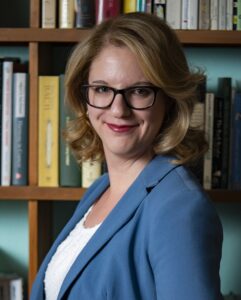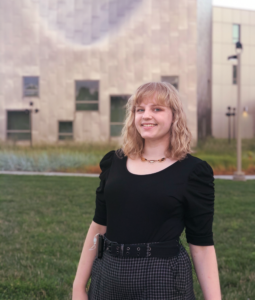Welcome!
Nearly thirty years ago, Marcia J. Citron boldly brought gender into discussions of canonicity in Western classical music and published one of the earliest feminist analyses of a musical composition (Gender and the Musical Canon, 1993). This critical book opened up a myriad of new ways of thinking and writing about music, as is evidenced in the plethora of excellent feminist scholarship that has appeared in the past three decades. Scholars of Western music theory have been slower to bring discussions of race to the table. In 2019, Philip A. Ewell’s monumental keynote address on “Music Theory’s White Racial Frame” at the annual meeting of the Society for Music Theory called out the discipline’s entrenched whiteness and sparked a maelstrom of controversy.
Despite the significant gains women and people of color have made in academia in recent decades, music theory as a discipline remains predominantly male and almost exclusively white.
I will never forget how inspired I was by the vast expanse of racial, gender, and class diversity I encountered in the first Music Theory 1 class I taught in 2016. The liberal arts college and two major conservatories where I had received my classical training did not have this level of diversity in the student bodies, and I was excited to see the eager faces of a new generation of music students who might finally change the face of classical music. My enthusiasm was diminished when I discovered that the wide array of perspectives my students brought to class were not represented in the musical examples found in the textbooks the university chose for my courses. When I began evaluating other textbooks, I quickly discovered that all the other mainstream undergraduate music theory textbooks used in the U.S. were similarly lacking in inclusivity.
Ewell has calculated that there are 2,930 musical examples in the 7 most-used undergraduate music theory textbooks in the U.S.
Of those examples, 1.67% are by non-white composers, and by my calculations, just 2.15% are by women.
I had intentionally been playing and studying the works of underrepresented composers for many years before I began my college teaching career, so I knew that good music by women and people of color who were active during the common practice period existed and was accessible. In my first year of undergraduate teaching, I committed myself to creating inclusive educational opportunities for my students by intentionally choosing classroom examples by historical composers from underrepresented groups. For the first few years, very few individuals outside of my students and close colleagues were particularly interested in the examples I was collecting. Several people even told me that it would not be possible to create a well-rounded set of undergraduate theory examples by women and/or people of color because those individuals were not writing good music before the 20th century! In 2020, the world changed, and suddenly many people were invested in making necessary changes to their courses. I never expected that this site would instantaneously become a global pedagogical resource used around the world, but I am tremendously grateful that it has been useful to so many!
The discipline of music theory is at a critical turning point.
As the next generation of music theory educators, we must not only broaden the scope of gender and race representation in our courses focused on Western tonal theory, but we must also critically and creatively work together to develop curricula that are antiracist and capable of evolving to meet the needs of an ever-changing music profession and study body. Significant changes to a discipline, regardless of how necessary those changes are, often take years to successfully implement. While this website is certainly not a solution for every flaw in music theory curricula, it does provide an accessible way for educators to include musical examples in their classes that are more representative of the broad spectrum of composers creating music during the Common Practice Era, particularly women and composers of color.
How to Use This Site
This site contains musical excerpts intended for use in the undergraduate Western tonal music theory core curriculum. Each theoretical concept is illustrated in a series of examples by women and composers of color. I have intentionally chosen examples that are aimed for the pedagogical moment when each concept is introduced in the majority of Western tonal music theory curricula. For example, excerpts demonstrating predominant chords do not contain chords employing secondary function, as most students study predominant function prior to secondary function etc.
On pages containing multiple concepts, such as the various types of sequences, I have provided a table of contents with anchor links for ease of navigation. The excerpts for each concept are arranged alphabetically by each composer’s last name.
Each example includes:
1) a PDF of an excerpt of an appropriate length for teaching ready for you to download and use in your lectures
2) a link to a public domain version of the full score
3) a link to a public domain recording when available
4) a link to a biography of the composer
The image beside each example provides a quick glance of a portion of the excerpt for you to quickly assess its appropriateness for use in your course.
About the Creator

Dr. Paula Maust is a performer, scholar, and educator dedicated to fusing research and creative practice to amplify underrepresented voices and advocate for social change. She is the creator of Expanding the Music Theory Canon, an open-source collection of music theory examples by women and people of color. A print anthology based on the project will be released with SUNY Press in December 2023. She is also collaborating with Auralia & Musition to curate a collection of worksheets to accompany the book that can be used in those platforms. Paula is also one of the early modern area editors for Oxford University Press’s women, gender, and sexuality revision of Grove Music Online.
Paula has published articles in Women and Music and the Journal of the International Alliance for Women in Music, and she has presented her research at conferences of the American Musicological Society, the Society for Seventeenth-Century Music, the American Handel Society, the Indiana University Historical Performance Institute, and the Music Theory Society of the Mid-Atlantic.
As a harpsichordist and organist, Paula has been praised for combining “great power with masterful subtlety” (DC Metro Theater Arts) and as a “refined and elegant performer” (Boston Musical Intelligencer). As the co-director of Musica Spira, she curates provocative lecture-concerts connecting baroque music to contemporary social issues focused on women. Paula performs extensively as a continuo player with numerous ensembles in the Baltimore-Washington, D.C. region, including the Washington Bach Consort, the Folger Consort, and Third Practice. She is also working on recording Elizabeth Turner’s 1756 Six Lessons for the Harpsichord.
Paula is an Assistant Professor of Music Theory at the Peabody Institute of the Johns Hopkins University. Prior to her appointment at Peabody, she taught at the University of Maryland, Baltimore County and in the Peabody @ Homewood program. She holds degrees in harpsichord from Peabody (DMA ’19, MM ’16) and in organ from the Cleveland Institute of Music (MM ’12) and Valparaiso University (BM ’09). Her teachers include Adam Pearl, Webb Wiggins, Todd Wilson, and Lorraine Brugh. More info can be found at paulamaust.com.
About the Research Interns
 Kathryn Blake assisted with curating the 20th-century excerpts as part of a research internship at the University of Maryland, Baltimore County in collaboration with I Resound Press.
Kathryn Blake assisted with curating the 20th-century excerpts as part of a research internship at the University of Maryland, Baltimore County in collaboration with I Resound Press.
Kathryn Blake is a composer, violist, and collaborator based in Maryland. She is currently completing her B.A. in Music Composition at University of Maryland, Baltimore County (UMBC). Kathryn has had her works performed at the 2019 Fresh Inc. Festival (Ella), Fall 2020 UMBC Department of Music Honors Showcase (Low Glucose Vibes), and was featured at the District New Music Coalition’s Fall 2020 conference (Just Ordinary). In 2019/20, she collaborated with choreographer Ann Sofie Clemmensen for her piece, In to and Out of. This work was performed at The Kennedy Center’s The REACH in 2019, and then again at the Baltimore Dance Project in 2020. Kathryn is one of the founding members of the Achelois Collective, a collective of women-identifying artists from across the United States who share a goal of helping the communities around them.
Aside from composing, Kathryn enjoys being a visual artist, trying new recipes, and being an advocate for affordable and accessible insulin. More info: kathryn-blake.com
Most of the engraving for the excerpts on this site was completed by Jeffrey Martin as part of a research internship at the University of Maryland, Baltimore County.
Drawn to a style of expressive abstraction, composer Jeffrey Martin writes music that is built on his study of music theory and interest in counterpoint and theories of pitch. He is pursuing degrees in music composition and computer science at the University of Maryland, Baltimore County, and cultivates an interest in the many possibilities that exist in the intersection of computers, music, and mathematics.
His output includes music for a diverse range of solo instruments including cello, piano, marimba, and ensembles such as string quartet, percussion quartet, piano trio, and choral music. A variety of ensembles have premiered and read his music, including the Bergamot String Quartet, Baltimore Choral Arts Society, Angora Ensemble, Third Practice, UMBC Percussion Ensemble, and UMBC New Music Ensemble. The Strata Trio will premiere Jeffrey’s latest work, Inverse Brocade, in April 2021.
Following his interests in music theory and musicology, Jeffrey served as a Research Intern with Dr. Paula Maust on the Expanding the Music Theory Canon website. This is a collection of inclusive music theory excerpts from the music of women and underrepresented minorities for use in undergraduate music curriculum. His contribution included the engraving of over two hundred excerpts from a variety of sources, as well as orchestral reduction and error correction in source materials.
Since computer software offers many possibilities for use in composition and analysis, Jeffrey has developed a program called Pitch Manipulator which allows efficient and accurate manipulation of pitch class sets and twelve tone rows. This software calculates pitch set prime forms and makes it easy to manipulate transpositions and inversions, freeing composers from the tedious job of error-prone manual pitch operations. The creation of Pitch Manipulator has brought new possibilities to Jeffrey’s compositional process and to his study of contemporary music.
When not reading books about music, composing, or studying, Jeffrey enjoys helping other students be successful academically. He has served as a Teaching Fellow in the computer science department and currently is involved in a program called Student Success Sessions designed to boost the performance of prospective computer science majors retaking introductory courses in the department.
After graduating from UMBC, Jeffrey plans to attend graduate school in music composition. He plans to continue his work in computer software for composition and analysis. Jeffrey also hopes to broaden his knowledge of music theory and expand his skills in electronic music, including the area of music programming.